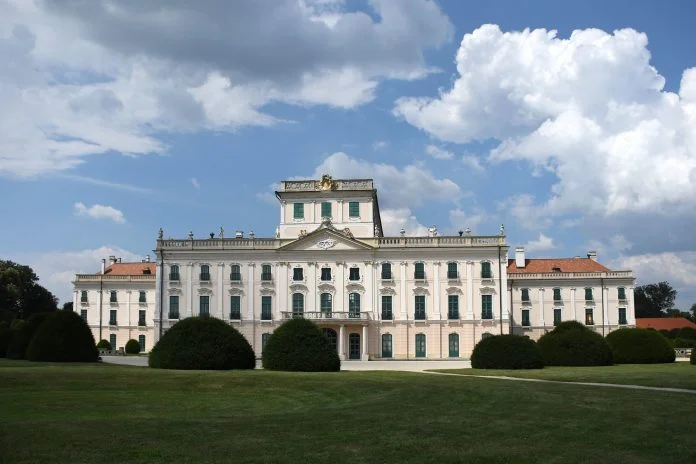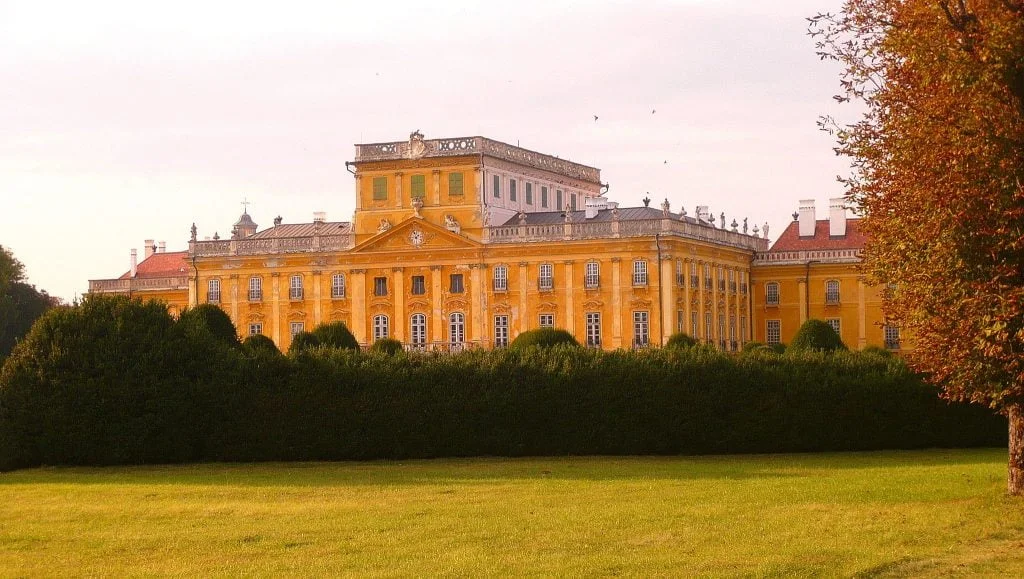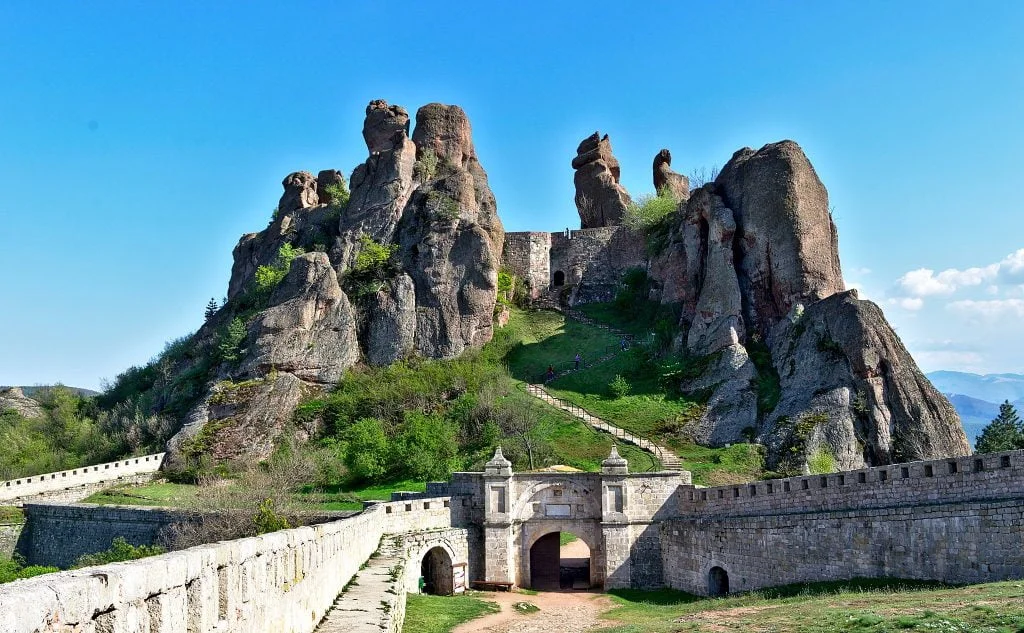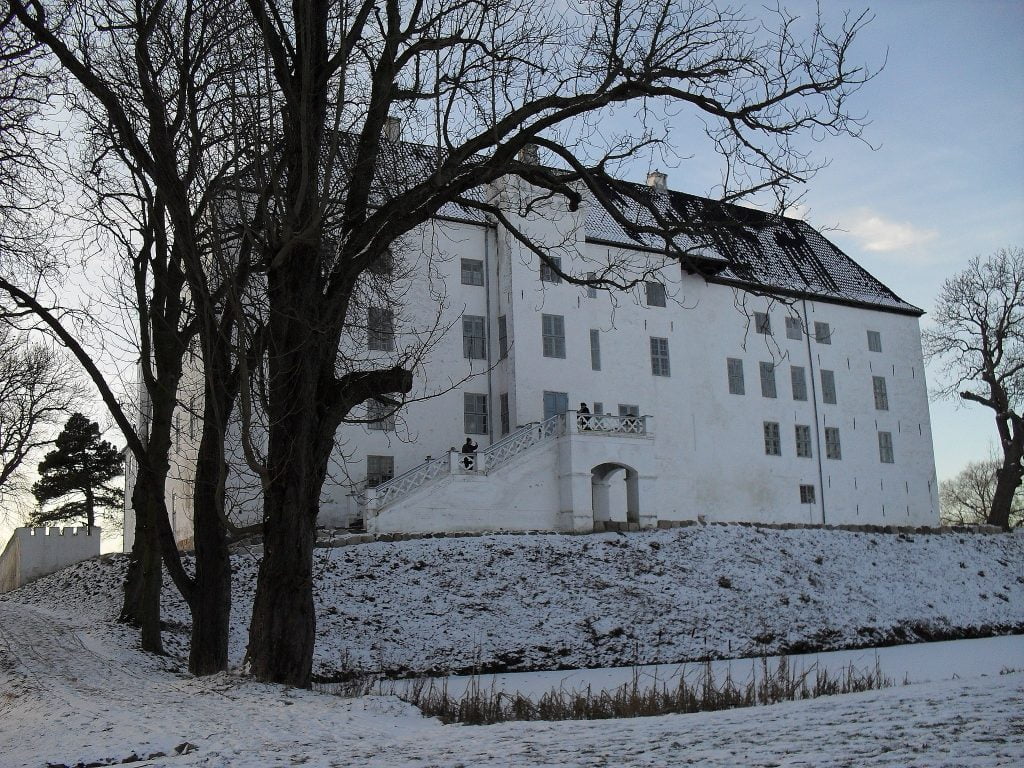Esterháza Palace (also known as Esterházy Palace, not to be confused with its Hungarian counterpart) is one of Austria’s finest Baroque castles. Originally a medieval fortress, Esterháza went through a major revamp in the sixteenth century that converted it into a fancy palace. Today, it’s a renowned cultural hub with a rich history that attracts hordes of tourists all year round. Let’s look at its beginnings, history, and how it fares in the world today:
Table of Contents
The beautiful frescos in the Haydn Hall are attributed to the renowned painter Carpoforo Tencalla.
Frequently Asked Questions
Where is Esterháza Castle Located?
Located in the Austrian town of Eisenstadt, the Esterháza Palace is a study in elegant ostentatiousness. Sitting in the center of East and West Europe, this castle has a prime position that lent the Esterházy family prime political leverage.
When was Esterháza Castle Built? Who Build It?
Although the initial construction of the Esterháza Palace was carried out in the thirteenth century, this castle in Austria that we see today was revamped and reinvented by the Esterházy family in the seventeenth century.
When is The Best Time to Visit the Castle?
Esterháza Palace is open all year round, but spring and autumn are the best time to visit if you want to take advantage of seasonal delights.
What Other Monuments are Located Nearby?
The Forchtenstein Castle, Lackenbach Palace, and St Margarethen Quarry are all interesting places to visit nearby.
FOR HISTORY | BEAUTIFUL IMAGES | INTERESTING FACTS | TRAVEL TIPS
Early History
Obscure History
Esterháza Palace was initially built in a fortress-like capacity in the thirteenth century, but little is known of its origins or who built it at the time. Some sources say that it was once owned by King Louis the Great when he built it as a medieval fortress. Before that, it is said to have been owned by the Kanizsay family of Hungary. Over the course of centuries, it was rebuilt and extended many times. However, it wasn’t until it was acquired by the Esterházy family that it emerged at the forefront of history.
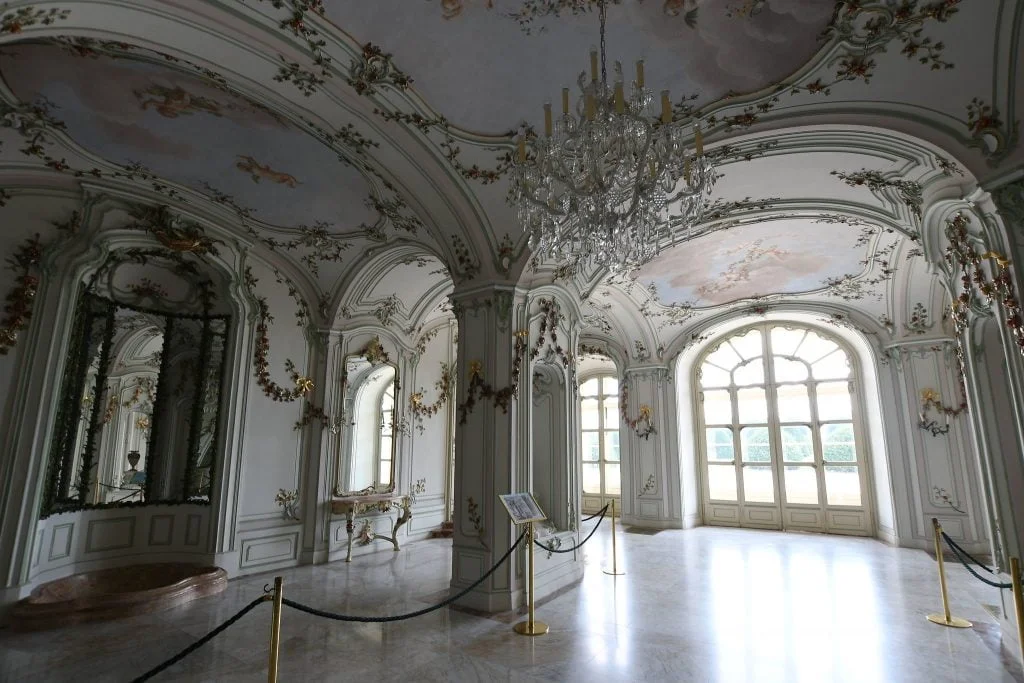
One With The Esterházy Name
Esterháza Palace came into the possession of the Esterházy family (a popular, well-pedigreed clan) in the seventeenth century. Initially, the palace was exchanged in the treaty where Nikolaus Esterházy gave up north-east Hungary to Gabor Bethlen. It was, however, physically bought from Ferdinand II by Ladilus Esterházy.
It was Paul I, the Prince Esterházy of Galántha, who initiated the refurbishment of the castle that started converting it from a fortress to a palace. This is when the building took on the appearance of a baroque castle and became the administrative hub of the Esterházy family.
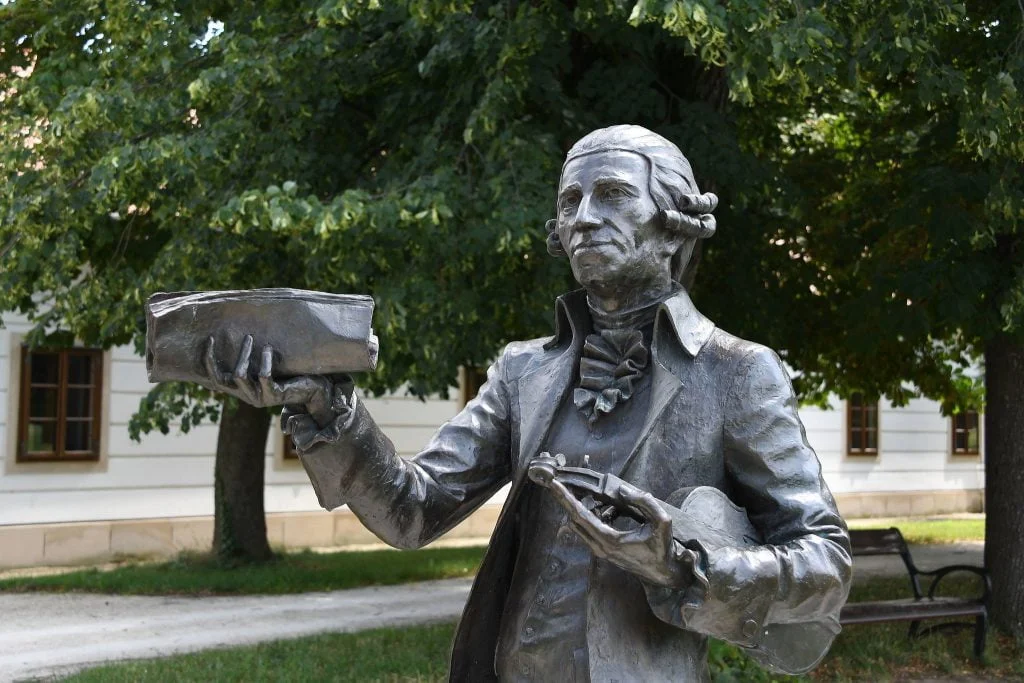
The planning of this entire venture is accredited to Carlo Martino Carlone – a Lombard builder from Vienna. The stonework, however, was carried out by Hieronymus Brego (a master stonemason from the Swiss region) and Ambrosius Ferretti (a Hungarian stonemason who worked with the imperial court).
During this venture, the Haydnsaal (also known as Haydn Hall) was added to Esterhaza. The hall is a multipurpose banquet room, still considered one of the most acoustically sound concert halls in the world. With a 10-year renovation expectation, the work still wasn’t completed because of a Turkish Siege in 1683.
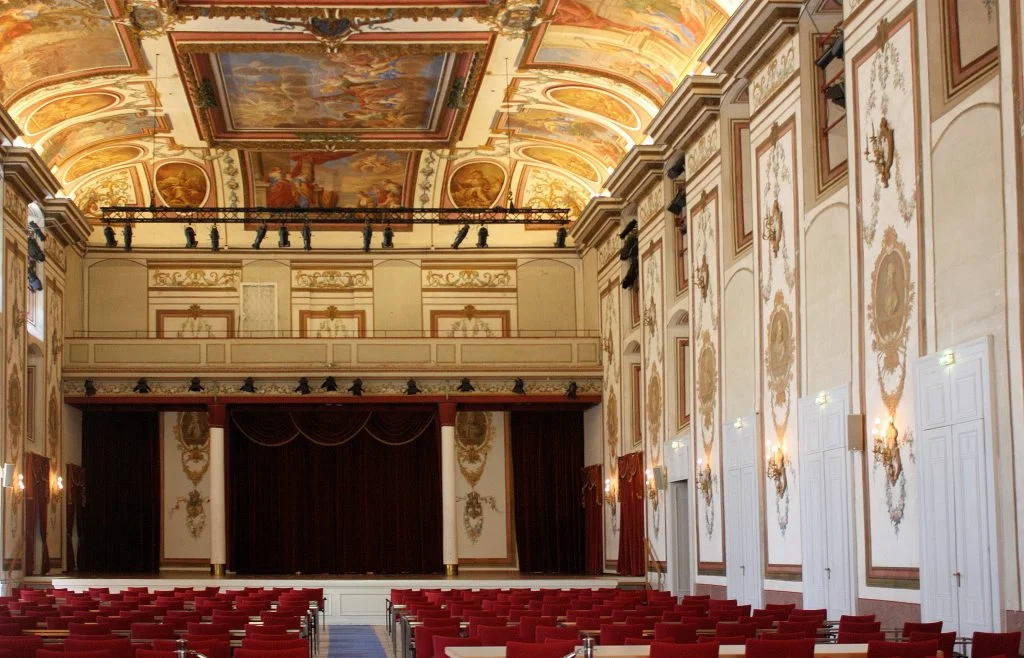
High Baroque Era (18th Century)
There weren’t many significant changes that took place in Esterháza Palace during the high baroque era. In fact, the only major additions to the architecture were the renewal of the main staircases, the interior (stucco ceilings and ovens), and the stone bridge that was constructed over the moat.
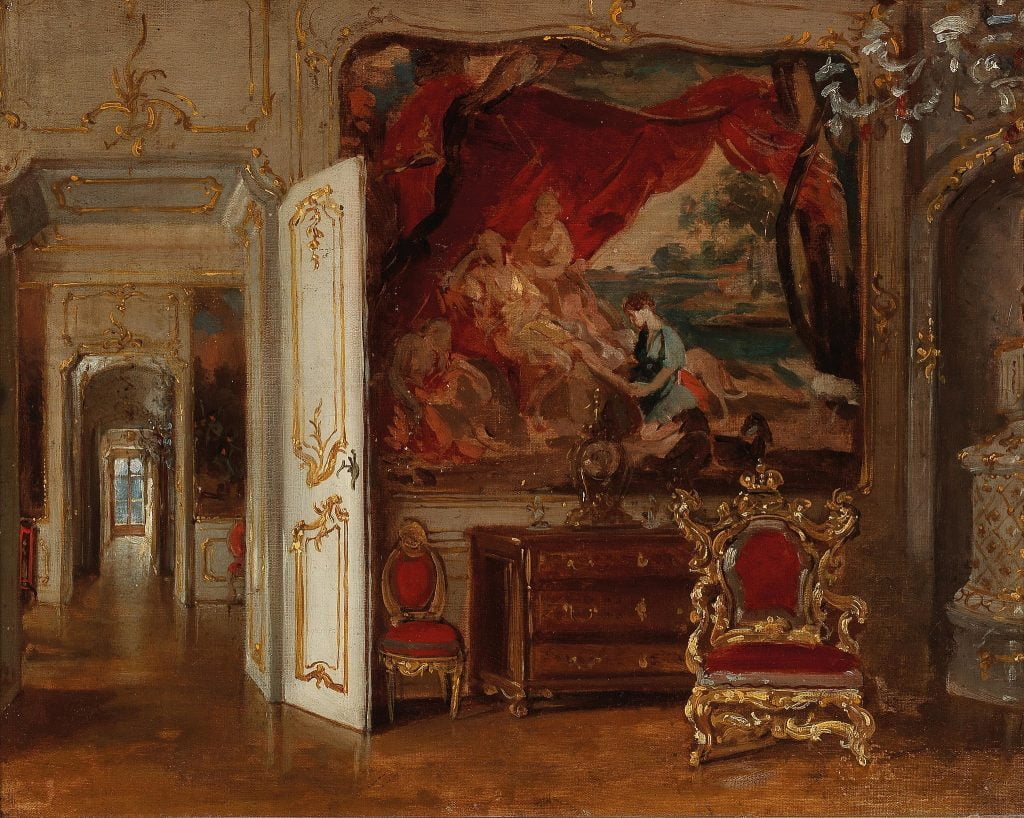
Nikolaus II’s Classical Undertaking (19th Century)
The beginning of the nineteenth century saw Nikolaus II (the extravagant failure of the Esterházy pedigree) take on a major refurbishment venture for Esterháza Palace. Master builder Karl Ehmann was hired to revamp the palace in the vein of classic architecture. The plans were drawn and drafted by French architect (and painter) Charles de Moreau. Even the moat was filled in.
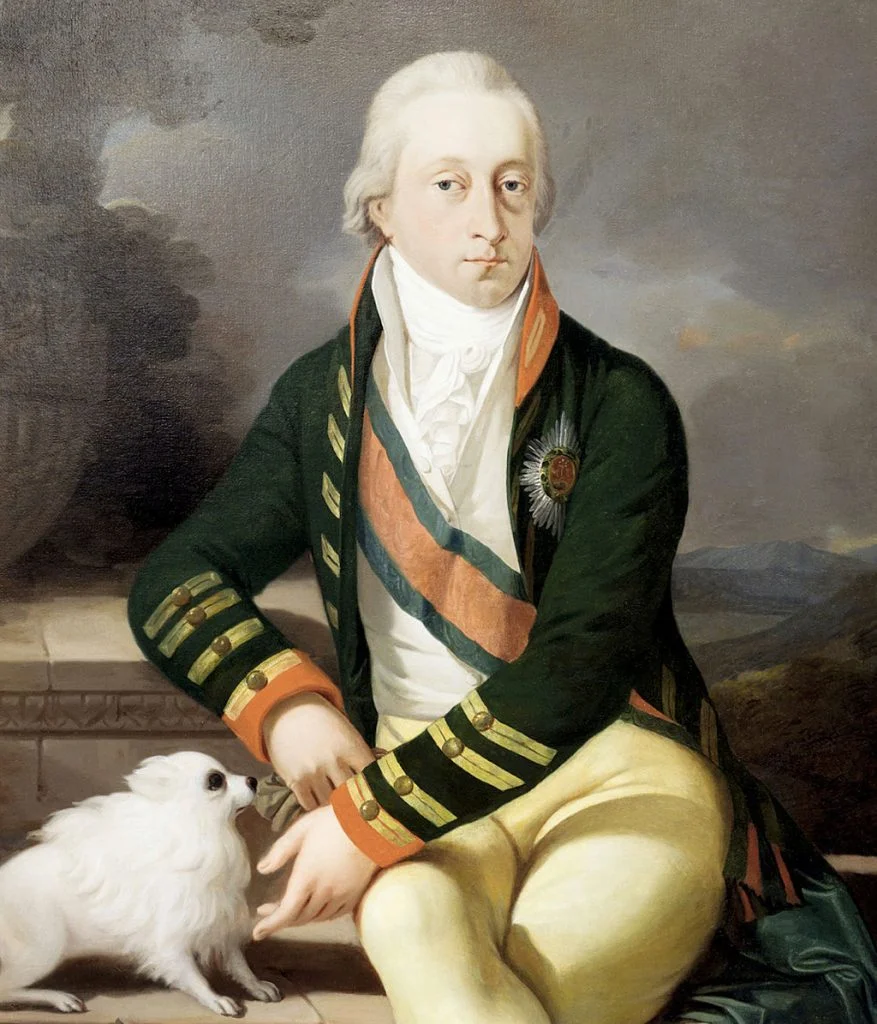
But what could have been an ambitious undertaking was put to a halt when the Napoleonic troops occupied Eisenstadt. Nikolaus II’s lack of funds and the severe economic inflation of the time because of the war also impacted the revamp. The grand entrance initiated during this venture remains incomplete to this day.
Revisit More Historic Places Below or Read Further
Current Times
Esterháza Palace served as the house of the Burgenland provincial government after World War II. From 1969 onwards, parts of it were leased to the state. The contract ended in 2009, but two major renovations were carried out on the castle during this time.
Today, the palace is owned and run by the Esterházy Foundation (formed by Melinda Esterházy, wife of the late Prince Paul Esterházy).
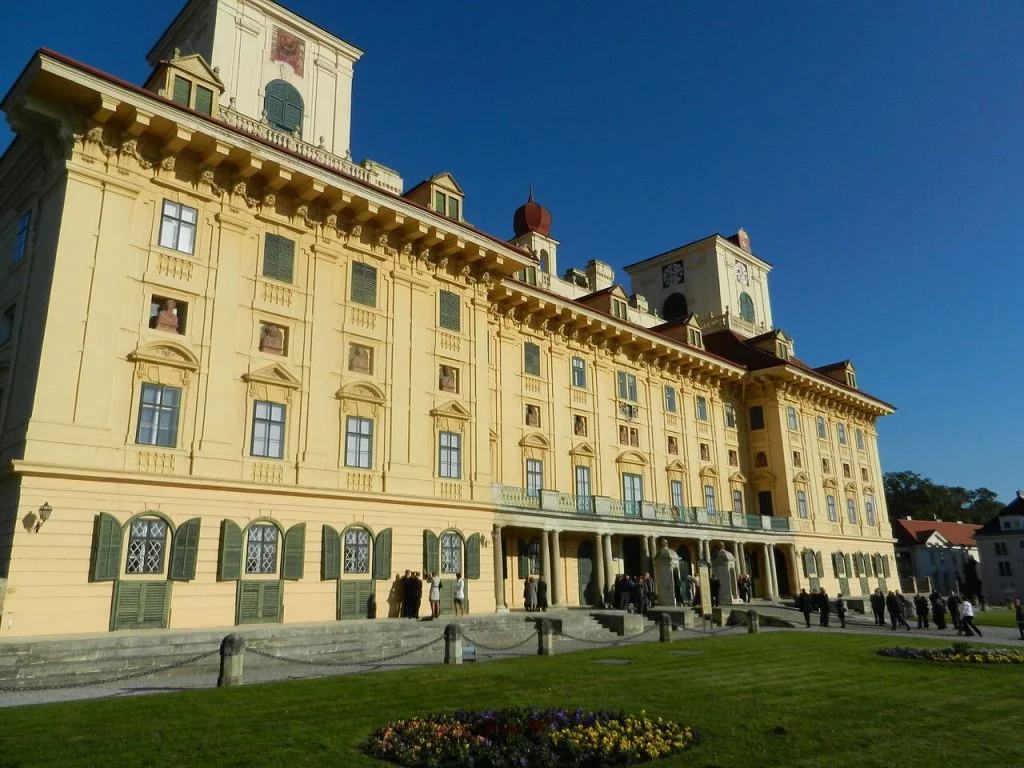
The Esterházys were connoisseurs of art and culture, they built the palace as a representation, even extension, of their hobbies and tastes. The Esterháza castle is home to various buildings that promote different art forms. From the Orangerie to the greenhouse facilities and to the temple in the eastern half of the palace that features an Italian statue of Princess Leopoldine Esterházy, it’s a place of man-made wonders that everyone should definitely experience.
Interesting Esterháza Castle Facts
- Legend has it that Nikolaus I mentioned the palace as “Eszterháza” in one of his letters, thus creating the origin story of the name that differentiates it from the Esterházy Palace in Hungary.
- The beautiful frescos in the Haydn Hall are attributed to the renowned painter Carpoforo Tencalla.
- Joseph Haydn (the famous Austrian classical music composer) was a regular feature at the castle and hosted many concertos there.
- The facade of this palace is a unique blend of baroque, neoclassical, and Austrian Biedermeier accents.
Visiting Esterháza Castle – Tips and Tricks
Esterháza Palace is the pinnacle of classic cultural heritage. It has been lovingly put together and regularly hosts some amazing events, including concertos (you can book tickets on the official website). So, if you’re in Austria, then it should definitely be on your list of places to visit. Here’s some convenient information that we’ve put together for you:
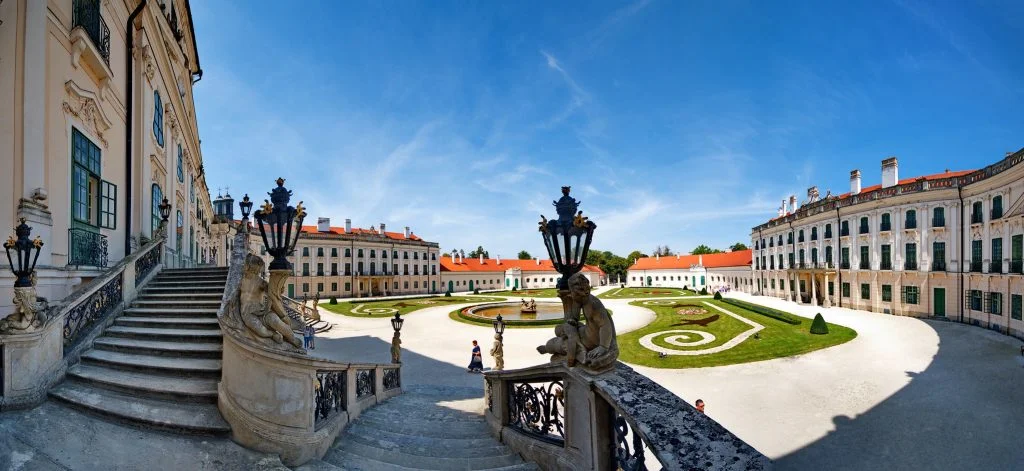
How to get to Esterháza Castle?
If you’re traveling to Esterháza Palace from Vienna, then you’re in for a short ride! For people who want to take public transportation, you can take the train from Wien Hauptbahnhof. It runs hourly and will take you an hour and a half to Eisenstadt Esterházystraße. From there, it’s an 18 minute (1.5 km/0.9 mile) walk to the castle that you can either cover on foot or take a taxi. It’s a cheap option that might cost between €14-€19 ($16-$22 USD).
You can also take the 40-minute drive from Vienna yourself at the cost of €5-€9 ($6-$10 USD). The same ride by taxi will cost you €86-€110 ($100-$130 USD).
Ticket Prices, Visiting Hours & Travel Tips
Information was checked & updated on October 22, 2023.
Esterháza Palace is open Tuesday to Sunday every day from 11:00 am to 4:00 pm. The ticket prices vary, but a single adult can get in for €19 ($20 USD) or opt for a €22($24 USD) ticket with a guided tour. A family ticket is for €39 ($42 USD) and €45 ($48 USD) with a guided tour.
There are two major individual packages that you can avail of. The Princely Afternoon package, for € 25 ($30 USD) per person, includes coffee and cakes at Café Maskaron. It takes 2 hours. The Sparkling Musical Delight Tour costs €38 ($45 USD) and is 3 hours long (runs 8 July – 27 August).
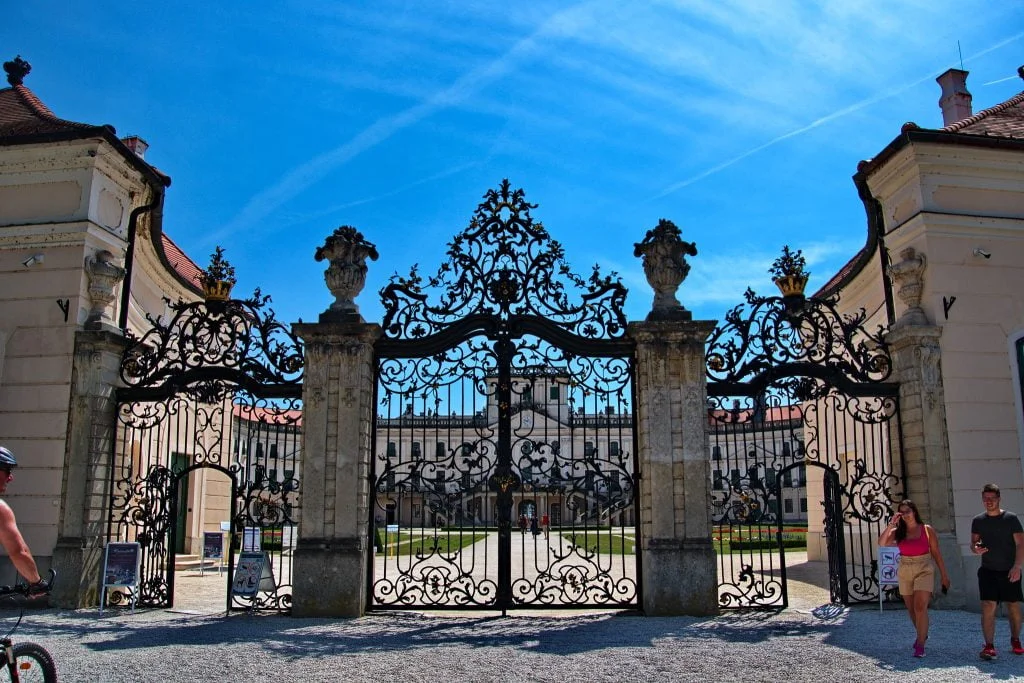
How Long Will It Take to Tour Around?
It takes 2-3 hours to explore Esterháza Palace.
Up to Date Information
For up to date ticket prices and visiting hours visit the official website: https://esterhazy.at/en/esterhazy-palace/visitor-information-esterhazy-palace
Some words of advice and tips:
- Note that every visitor is required to wear an FFP2 mask when touring the castle while keeping a 2-meter distance from people who’re not from your group.
- The palace has a redesigned boutique where you can buy various wines, books, and other souvenirs, so keep your wallet handy.
There are various parking options at Esterházy Palace, you can take a look at all of them in detail on their official website page.

